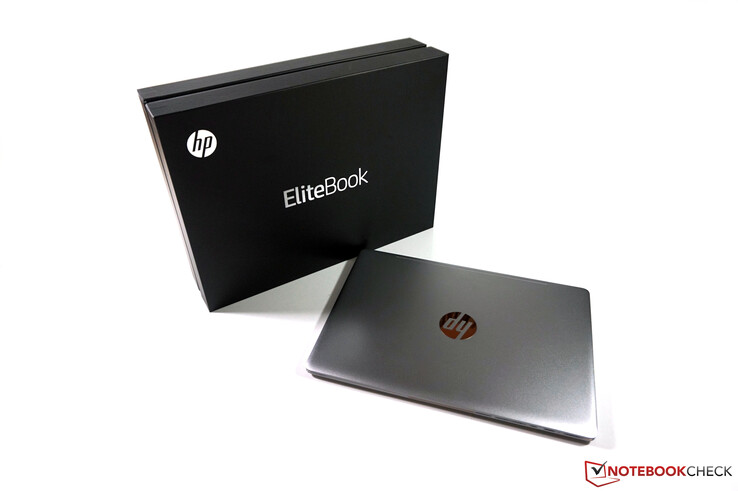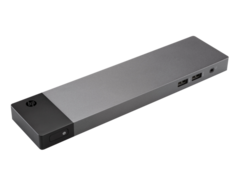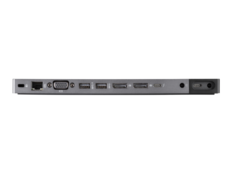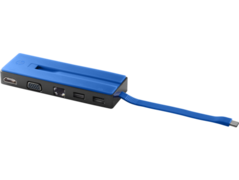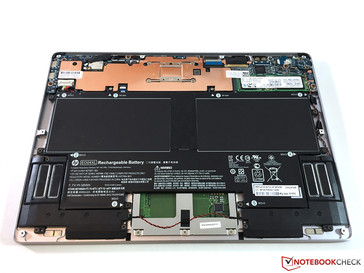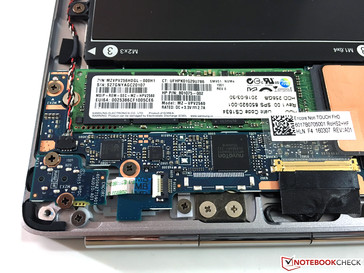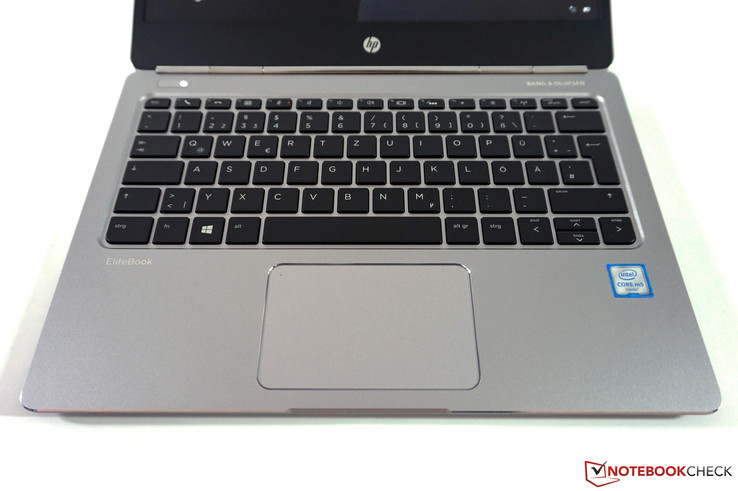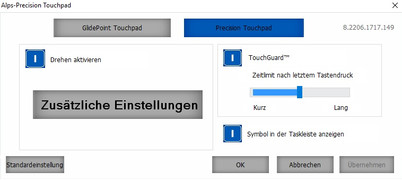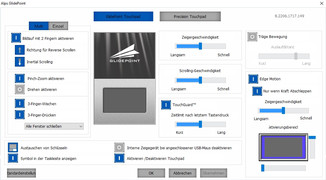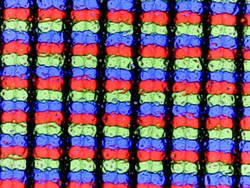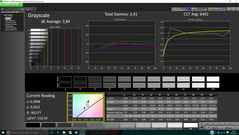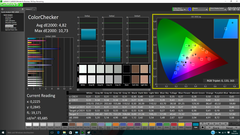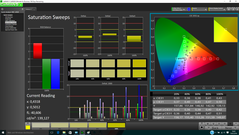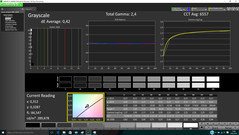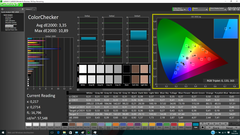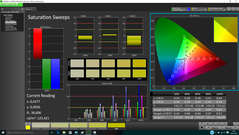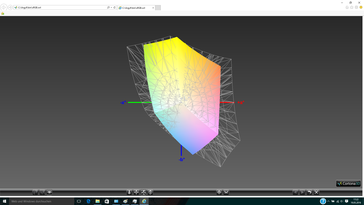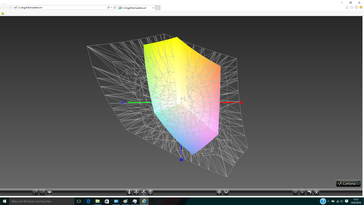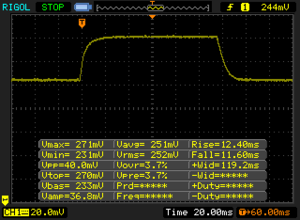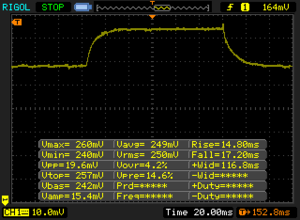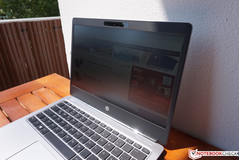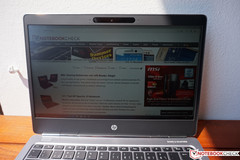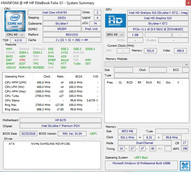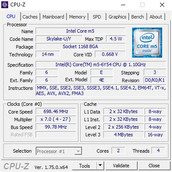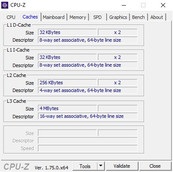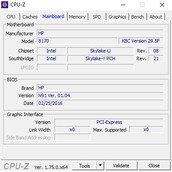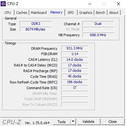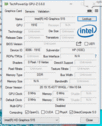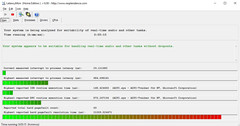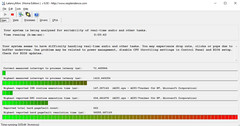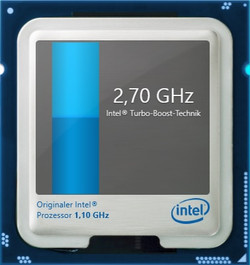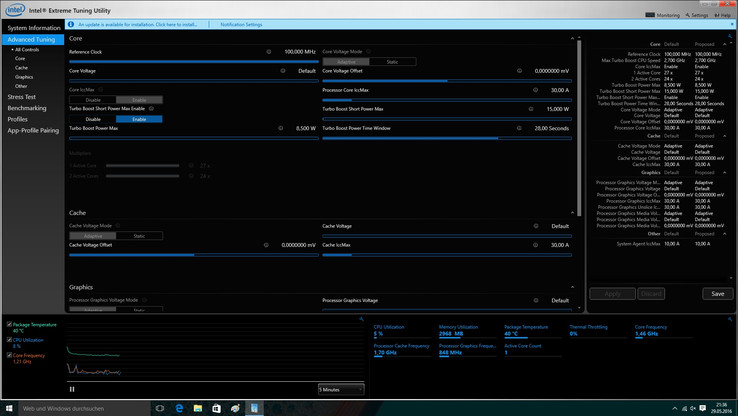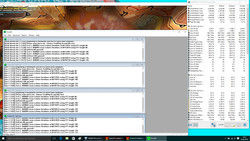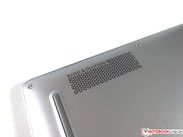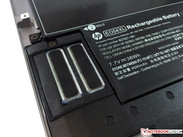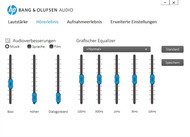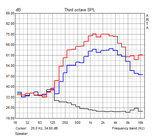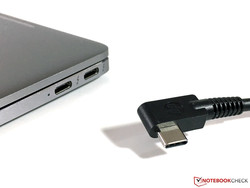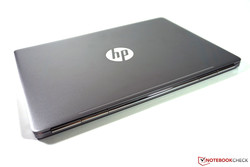HP EliteBook Folio G1 Subnotebook Review

For the original German review, see here.
After we recently reviewed the world's thinnest notebook from HP (review of the Spectre 13), we now have a look at the HP EliteBook Folio G1. It is actually the world's thinnest and lightest business notebook according to HP, and it was announced at CES earlier this year. Thanks to the frugal Core m processor from Intel, the device can be cooled passively and waives any fans. Those processors were often used in compact notebooks or convertibles for private users so far, but the addition EliteBook indicates the business capabilities of the Folio G1. We are therefore obviously eager to see whether you can actually use the Folio G1 as a productive tool, or if the limitations due to the thin construction are too big.
Contrary to other business devices from HP, there are currently a comparatively low number of configurations for the Folio G1. You can choose between a total of four processors (Core m3, m5 and m7), different M.2-SSDs as well as several IPS displays (FHD glossy, FHD matte, FHD touch, 4K touch). Our test model of the EliteBook Folio G1 carries the designation V1C37EA and is well-equipped with a Core m5, 8 GB RAM, 256 GB PCIe-SSD and a matte FHD screen. Prices for the EliteBook Folio G1 are between ~1,500 and 2,200 Euros (~$1681 and ~$2465).
Priced at little more than 1,500 Euros (~$1681), our EliteBook Folio G1 is one of the cheapest configurations, but it is certainly not a bargain. We are still a bit surprised when we look at the rivals, because our model in particular turns out to be very competitive. The obvious alternative is the MacBook 12 from Apple, which retail for 1,450 Euros (~$1625) with a Core m3 (Core m5 + 512 GB SSD for 1,800 Euros, ~$2017). Another passively cooled competitor is the Asus Zenbook UX305CA for around 1,300 Euros (~$1457). The recently reviewed Dell Latitude 7370 also uses the Core m but is much more expensive with similar specs at 3,200 Euros (~$3586). However, Dell regularly offers big discounts (currently 35%), so went want to use it for the comparison as well.
All our other rivals are a bit heavier, thicker, and actively cooled, but they also offer more performance thanks to full-fledged Core-i processors. Some of our test models are much more expensive, but the entry-level models are on par with the EliteBook Folio G1 or just slightly more/less expensive, respectively. We decided to use the following devices: Dell XPS 13 FHD (from 1,250 Euros, ~$1400), Lenovo ThinkPad X1 Carbon (from 1,700 Euros, ~$1905) and EliteBook Folio 1040 G3 (from 1,700 Euros, ~$1905).
Case
We start with the dimensions of the HP EliteBook Folio G1. At a height of just 12.4 mm (without support feet), the review unit beats all the rivals including the Apple MacBook 12. The latter has a smaller footprint though and is a bit lighter. Then we have the two devices from Dell, which are a bit bigger and also a bit heavier at ~1.2 kg. The other three comparison devices have a bigger footprint in particular, which is also visible in the size chart below. All in all, the EliteBook Folio G1 is very mobile and can easily be stored in your bag. The configuration with the 4K touchscreen is about 100 grams heavier, but the other dimensions are identical.
HP follows its design language, despite the compact construction, and you can immediately see that the Folio G1 is an EliteBook. The case is made of aluminum and leaves a very noble impression with its silver-shimmering surfaces. The polished surrounding edge at the top of the base unit and the glossy hinge support this as well. The latter slightly protrudes from the back of the case and reminds us of the Chromebook Pixel. Once you open the lid, you will notice the black keyboard and the black display frame, which create a convenient contrast to the rest of the case. The frame is pretty thin at the sides, but there is still a lot of space below the panel in particular; a 16:10 panel would have fitted very well. There is also a glossy logo on the lid as well as a thin plastic stripe, which probably covers the WLAN antennas. The EliteBook Folio G1 is definitely an eye-catcher.
But the test model does not have to hide in terms of stability or build quality, either. Only the central keyboard area can be slightly pushed down, but it requires a lot of force. Otherwise, you can neither warp nor twist the base unit. The lid is not that thin compared to the base and the stability is also good. You can twist it a bit, but we could not provoke picture distortions or creaking sounds. This is also the case for pressure at the back. The small EliteBook Folio G1 even passed 12 tests according to the military standard MIL-STD-810G (temperature, humidity, dust etc.). There is not much to say about the build quality, because it is flawless. We cannot find any sharp edges and everything fits perfectly.
Still, not even the small EliteBook is without flaws. The problem is the display hinge, which seems to be made of plastic. It is very smooth and allows an opening angle of up to 180 degrees, but it is not taut enough to prevent visible bouncing. The lid can also open a bit too easily; a magnetic fixation would help here.
Connectivity
Thanks to its two USB 3.1 ports (Gen. 2) with Thunderbolt support, the HP EliteBook Folio G1 is better equipped than the MacBook 12 (1x USB 3.1 Type-C Gen. 1), but you will still need an adapter to attach peripherals most of the time due to the Type-C connector. HP does offer corresponding adapters (USB 3.0, HDMI, DisplayPort, RJ45), but none are shipped with the Folio G1. We would have expected at least an adapter to USB-A at this price. The mandatory 3.5 mm jack is available as well, but there is no SD-card reader.
We are still not completely happy with the port layout, even though there are just three ports. Both USB connectors are on one side, but one port per side would have been much more comfortable depending in the position of the socket. The performance of the USB ports is okay. We determined a good transfer rate of 370 MB/s in combination with our external Samsung SSD T3.
Communication
An Ethernet connector could be realized via adapter, but the EliteBook Folio G1 will primarily use wireless networks. HP uses the popular module Dual-Band Wireless -AC 8260 from Intel, which supports Bluetooth 4.2 and Wireless Display (WiDi) besides all the usual WLAN standards (including the fast 802.11ac). The theoretical transfer rate is 867 Mbps, and we measured a very good ~79 MB/s (receive, 51 MB/s transmit) in our standardized WLAN test with the router Linksys EA8500 (short distance and direct sight). The EliteBook Folio G1 is therefore one of the fastest devices we reviewed so far. The connection was also very stable during our test period. A WWAN module is not available for the EliteBook Folio G1. Mobile Internet connections either have to be established via UMTS/LTE stick (via adapter) or via smartphone (tethering).
Above the display is the familiar HD webcam we already know from other EliteBooks. We can make this pretty short: The quality is sufficient for conferences or Skype calls, but you should use your smartphone for decent pictures. The microphone leaves a better impression and convinces with clear voice recording.
| Networking | |
| iperf Server (receive) TCP 1 m 512KB | |
| Dell Latitude 13 7370 | |
| HP EliteBook Folio G1 V1C37EA | |
| iperf Client (transmit) TCP 1 m 512KB | |
| Dell Latitude 13 7370 | |
| HP EliteBook Folio G1 V1C37EA | |
| iperf Server (receive) TCP 1 m | |
| Apple MacBook 12 (Early 2016) 1.1 GHz | |
| iperf Client (transmit) TCP 1 m | |
| Apple MacBook 12 (Early 2016) 1.1 GHz | |
Security
This is one section where the EliteBook Folio G1 falls behind its business competitors. We don't get a fingerprint scanner or a SmartCard reader and not even a slot for a Kensington lock. The situation is still not hopeless, because HP implements a TPM chip (2.0, EAL4+) and installs the familiar ClientSecurity software, which offers many options in one app (like hard drive encryption, for example). Other tools like HP BIOSphere, HP SureStart etc. are available as well. Besides the normal HD webcam, we also get an IR camera for Windows Hello. The facial recognition also works in the dark and the process was reliable during our review. Intel's vPro technology is only supported in combination with the Core m7 processor. Some configurations are also available with self-encrypting SSDs (OPAL 2.0 standard).
Accessories
The box of the EliteBook Folio G1 is also very stylish, but this has no effect on the accessories. We can only find the notebook, the 45-Watt power adapter and the usual service brochures in it. We already mentioned HP offers a number of adapters for the USB-C ports. HP also offers two docking stations, even though the USB-C Travel Dock (~125 Euros, ~$140) is not a classic docking station, because there is no power supply. This is possible with the docking station HP Elite Thunderbolt 3 Dock for around 220 Euros (~$246), so you can easily integrate the EliteBook Folio G1 into your working environment.
Maintenance
The whole bottom panel can be removed after you loosen some Torx screws (T5). There is not much to do though, because you can only replace the M.2-SSD (2280). Our review unit is already equipped with a fast PCIe-SSD, so this only makes sense when you need more storage capacity. The reattachment was a bit tricky, because the bottom panel sits very tight.
Warranty
The warranty period for the HP EliteBook Folio G1 is three years and includes a Pickup & Return service. HP also offers optional Care Packs to extend the period and the scope of the warranty for an additional charge. The upgrade to a three-year on-site service (UQ823E) retails for around 360 Euros (~$403), while the upgrade to a five-year on-site service with keep your drive (UE337E) costs around 400 Euros (~$448).
Input Devices
Keyboard
Can such a thin device even have a good keyboard? We were a bit surprised, but the answer is definitely yes in this case. The black and smooth keys only have a travel of about one millimeter, while many other compact devices have 1.3-1.5 mm (MacBook 12: 0.5 mm). Thanks to the well-defined feedback though, the typing experience is still very comfortable. There is no clattering, either, and the noise development during typing is conveniently low.
We now had the EliteBook Folio G1 for almost two weeks and used it to write this review and other articles during this time. Overall, we prefer this input over the EliteBook Folio 1040 G3, and it does not have to hide behind the ThinkPad X1 Carbon, either. We personally only preferred the keyboard of the larger ThinkPad T460s over the last couple of months. Still, we can only commend HP in this section, especially when you consider the compact construction. Frequent writers will be very happy with this keyboard as well.
We can only criticize the narrow directional keys in terms of the layout. The function keys are also a bit smaller, and they trigger additional features (brightness, speakers etc.) by default, while the regular F1-F12 keys can only be used in combination with the Fn key. This allocation can be changed in the BIOS, but not in operation. It is also possible to swap Ctrl and Fn in the BIOS.
You do not have to waive a white LED illumination, either. There are two brightness levels, and it is deactivated 15 seconds after the last input by default. This behavior can be changed in the BIOS as well (5s, 15s, 30s, 1m, 5m, never). Note: Contrary to the other EliteBooks, the keyboard of the EliteBook Folio G1 is not spill-water resistant.
Touchpad
HP implements a ClickPad without dedicated buttons. You can click the lower area of the pad instead, which creates a pretty loud clicking sound. The smooth surface measures 9.5 x 6 cm and could actually be a bit bigger. The gliding capabilities are good, but our clicks (by tapping) were not always recognized reliably, so there were sometimes wrong inputs. Gestures with up to three fingers on the other hand worked well.
The touchpad driver allows two operating modes: Precision Touchpad and GlidePoint Touchpad. The Precision version uses the Windows settings, the GlidePoint version the settings of the driver. The functionality basically does not differ, but you can adjust more settings in the GlidePoint version. A double-tap in the upper left corner can be used to activate/deactivate the touchpad, which is indicated by an LED. The touchpad can also be deactivated automatically when you attach a mouse.
Display
We already mentioned that HP offers four different IPS panels for the EliteBook Folio G1 including a 4K touchscreen. Except for the resolution and the panel surface, HP does not give us any specs for the luminance or the color gamut. Our review unit uses the matte FHD IPS panel. The 12.5-inch screen has a resolution of 1920x1080 pixels, which results in a good pixel density of 176 PPI, so content is sufficiently sharp. You can still work very well without scaling, and we think this resolution is a good compromise between the sharpness and screen estate. The optional 4K screen comes with some drawbacks (higher weight, higher consumption, glossy surface) you should consider.
Subjectively, we really like the display, but the matte surface does result in a slightly grainy picture impression. This was no problem for us, but users that are used to glossy screens in particular will notice it. Positive: We could neither detect PWM to control the brightness nor noticeable backlight bleeding.
Screen Flickering / PWM (Pulse-Width Modulation)
| Screen flickering / PWM not detected | ||
In comparison: 53 % of all tested devices do not use PWM to dim the display. If PWM was detected, an average of 8152 (minimum: 5 - maximum: 343500) Hz was measured. | ||
| |||||||||||||||||||||||||
Brightness Distribution: 87 %
Center on Battery: 291 cd/m²
Contrast: 1070:1 (Black: 0.27 cd/m²)
ΔE ColorChecker Calman: 4.82 | ∀{0.5-29.43 Ø4.79}
ΔE Greyscale Calman: 3.84 | ∀{0.09-98 Ø5}
64.8% sRGB (Argyll 1.6.3 3D)
42.03% AdobeRGB 1998 (Argyll 1.6.3 3D)
45.96% AdobeRGB 1998 (Argyll 3D)
65.2% sRGB (Argyll 3D)
44.45% Display P3 (Argyll 3D)
Gamma: 2.41
CCT: 6492 K
| HP EliteBook Folio G1 V1C37EA 12.5", 1920x1080, IPS | Apple MacBook 12 (Early 2016) 1.1 GHz 12", 2304x1440, IPS | Asus Zenbook UX305CA-FB055T 13.3", 3200x1800, IPS | Dell Latitude 13 7370 13.3", 1920x1080, IPS | Dell XPS 13-9350 13.3", 1920x1080, IPS | Lenovo ThinkPad X1 Carbon 20FB-005XUS 14", 1920x1080, IPS | HP EliteBook Folio 1040 G3 14", 2560x1440, IPS | |
|---|---|---|---|---|---|---|---|
| Display | 48% | 32% | 18% | 1% | 30% | 51% | |
| Display P3 Coverage (%) | 44.45 | 66.8 50% | 59.1 33% | 52.2 17% | 44.53 0% | 58.9 33% | 67.9 53% |
| sRGB Coverage (%) | 65.2 | 95.4 46% | 85.5 31% | 78.3 20% | 66.8 2% | 83.1 27% | 96.8 48% |
| AdobeRGB 1998 Coverage (%) | 45.96 | 68 48% | 61 33% | 53.9 17% | 45.97 0% | 60.3 31% | 70 52% |
| Response Times | -28% | -16% | -49% | -32% | -28% | ||
| Response Time Grey 50% / Grey 80% * (ms) | 32 ? | 41.2 ? -29% | 38 ? -19% | 50.4 ? -58% | 47.2 ? -48% | 46.4 ? -45% | |
| Response Time Black / White * (ms) | 24 ? | 30.4 ? -27% | 27 ? -13% | 33.6 ? -40% | 27.6 ? -15% | 26.4 ? -10% | |
| PWM Frequency (Hz) | 1429 ? | ||||||
| Screen | 24% | 0% | -2% | 5% | 14% | 9% | |
| Brightness middle (cd/m²) | 289 | 387 34% | 390 35% | 261 -10% | 277.5 -4% | 321.7 11% | 327 13% |
| Brightness (cd/m²) | 298 | 358 20% | 352 18% | 241 -19% | 276 -7% | 301 1% | 316 6% |
| Brightness Distribution (%) | 87 | 88 1% | 81 -7% | 85 -2% | 88 1% | 89 2% | 87 0% |
| Black Level * (cd/m²) | 0.27 | 0.47 -74% | 0.69 -156% | 0.26 4% | 0.191 29% | 0.294 -9% | 0.35 -30% |
| Contrast (:1) | 1070 | 823 -23% | 565 -47% | 1004 -6% | 1453 36% | 1094 2% | 934 -13% |
| Colorchecker dE 2000 * | 4.82 | 1.6 67% | 3.04 37% | 4.3 11% | 4.88 -1% | 3.96 18% | 4.39 9% |
| Colorchecker dE 2000 max. * | 10.73 | 4 63% | 7.01 35% | 8.66 19% | 6.69 38% | 7.27 32% | |
| Greyscale dE 2000 * | 3.84 | 1 74% | 2.88 25% | 5.82 -52% | 4.26 -11% | 3.15 18% | 4.69 -22% |
| Gamma | 2.41 91% | 2.26 97% | 2.43 91% | 2.44 90% | 2.59 85% | 2.34 94% | 2.15 102% |
| CCT | 6492 100% | 6680 97% | 6848 95% | 6771 96% | 6562 99% | 7082 92% | 7101 92% |
| Color Space (Percent of AdobeRGB 1998) (%) | 42.03 | 61.6 47% | 55 31% | 49.18 17% | 41.6 -1% | 53.8 28% | 62.52 49% |
| Color Space (Percent of sRGB) (%) | 64.8 | 82.2 27% | 85 31% | 77.84 20% | 65.79 2% | 82.7 28% | 96.71 49% |
| Total Average (Program / Settings) | 15% /
22% | 5% /
4% | -11% /
-4% | 3% /
4% | 4% /
11% | 11% /
13% |
* ... smaller is better
The test model performs well in our measurements. However, the display quality is pretty high in the comparison group, so the EliteBook Folio G1 only manages average results here. The average luminance is just under 300 cd/m², which does result in a contrast ratio of more than 1000:1 in combination with the low black value of 0.27 cd/m².
The average DeltaE 2000 deviations of the colors and the grayscale are decent ex-works at 4.82 and 3.84, respectively. However, we can see some outliers for blue colors in particular (>12), which cannot be removed by a calibration. The latter primarily improves the grayscale, where the deviation compared to the sRGB reference drops to just 0.42, and the colors slightly improve to 3.35 as well.
One drawback of the panel is definitely the color-space coverage, so you can hardly use the test device for picture editing. We can only measure 65% sRGB and 42% AdobeRGB. Some of the competitors are much better in this respect. HP does not give us any information for the different panel but waives the addition DreamColor for the UHD screen. We therefore do not know if it will perform any better.
Display Response Times
| ↔ Response Time Black to White | ||
|---|---|---|
| 24 ms ... rise ↗ and fall ↘ combined | ↗ 12.4 ms rise | |
| ↘ 11.6 ms fall | ||
| The screen shows good response rates in our tests, but may be too slow for competitive gamers. In comparison, all tested devices range from 0.1 (minimum) to 240 (maximum) ms. » 53 % of all devices are better. This means that the measured response time is worse than the average of all tested devices (20.3 ms). | ||
| ↔ Response Time 50% Grey to 80% Grey | ||
| 32 ms ... rise ↗ and fall ↘ combined | ↗ 14.8 ms rise | |
| ↘ 17.2 ms fall | ||
| The screen shows slow response rates in our tests and will be unsatisfactory for gamers. In comparison, all tested devices range from 0.165 (minimum) to 636 (maximum) ms. » 41 % of all devices are better. This means that the measured response time is similar to the average of all tested devices (31.7 ms). | ||
Thanks to the good luminance, which is not reduced on battery power, as well as the matte panel surface, working with the EliteBook Folio G1 is also very comfortable in bright environments. Only direct sunlight should be avoided, because the picture will otherwise wash out. There are no problems in terms of viewing angles, either. The IPS panel ensures a stable picture from every direction, only extreme angles can result in a slight drop of the brightness.
Performance
Now we talk about a very important chapter, the performance. The configuration of the processor is very important, because the notebook manufacturers can adjust the TDP limit (more on that soon). This means two notebooks can differ in terms of performance, even if they are equipped with the same processor.
Is such a passively cooled Core m sufficient? This obviously depends on the planned usage scenario. Typical office applications would be MS Office, Adobe PDF, Sharepoint, Skype, video conferences etc. If you do not have to edit extremely large documents, the EliteBook Folio G1 will certainly suffice. Even the editing of pictures, drawings and videos is no problem to some extent.
Between the individual benchmarks, we gave the system some time to cool down. We will later see that the limiting factor for the Folio G1 is the temperature and not the TDP limit.
Processor
The Core m5-6Y54 is a frugal dual-core processor based on the Skylake architecture (14 nm). Thanks to Hyper-Threading, the CPU can execute up to four threads simultaneously. The nominal clock is just 1.1 GHz but can be increased up to 2.7 GHz for one core (2 cores: up to 2.4 GHz) via Turbo Boost. The TDP is usually 4.5 Watts, but HP increased the value pretty significantly for the Folio G1. The Core m5 can consume up to 15 Watts for short periods (28 seconds) and permanently 8.5 Watts, so we can expect a good Turbo utilization.
The chip actually performs very well in the benchmarks and can even keep up with the Core i5-6200U in the Cinebench R15 Single Test – at least in the first run. The full 2.7 GHz is not available the whole time, and the chip will usually level off at 2.5-2.7 GHz depending on the temperature. The full 2.4 GHz is available in the first 28 seconds of the Multi Test (~9.4 Watts), before the TDP limit at 8.5 Watts will set in and the clock drops to 2.3 GHz. The temperature starts to play a role in the second run, where the limit is 80 °C. It will later drop to 74 °C (clock between 1.8-2.2 GHz). The result leveled off at ~195 points after seven runs. This is probably a safety feature to prevent extreme surface temperatures.
The CPU performance is still very good in general, and the review unit can beat all the other passively cooled rivals. Even the standard ULV processors with an advantage of 15-20% are not that much faster. The full performance is also available on battery power. At least in theory, because we can observe the same temperature limitations.
Because of the latter, the optional Core m7 only makes sense if you want to use the vPro support, which is not offered by the Core m5. The performance, however, particularly under sustained workloads, should hardly differ. More benchmarks with the Core m5-6Y54 are available in our database.
System Performance
The specifications of the EliteBook Folio G1 suggest a fast system, because the Core m processor is supported by 8 GB memory (LDDR3-1866) in dual-channel mode and an SSD in every configuration. Our system is even equipped with a very fast PCIe-NVMe model. The notebook works really well in practice. Windows and applications launch quickly thanks to the SSD, and the processor can easily cover short peak load thanks to the Turbo Boost. It will take extreme workloads like excessive multitasking or picture editing with many filters to show the limitations of the system. Our subjective impression is also confirmed by PCMark 8, because the test model is among the fastest devices within our comparison group in the important Work Test. The EliteBook Folio G1 does not have to hide behind full-fledged business notebooks, either.
| PCMark 8 Home Score Accelerated v2 | 3037 points | |
| PCMark 8 Creative Score Accelerated v2 | 3430 points | |
| PCMark 8 Work Score Accelerated v2 | 4146 points | |
Help | ||
Storage Devices
All configurations of the EliteBook Folio G1 are shipped with M.2-SSDs with a storage capacity between 128 and 512 GB. Our test model is even equipped with a fast PCIe-NVMe SSD from Samsung (SM951) and a capacity of 256 GB. Except for the Asus Zenbook (SATA-III), all the rivals are equipped with fast PCIe-SSDs, so the benchmarks results are often comparable. We can still see some variation for the fast drives in the benchmarks, so smaller differences can be neglected. Besides the Zenbook, both the Apple MacBook 12 as well as the Dell XPS 13 (write speeds in particular) clearly fall behind the Folio G1. Subjectively, you can mainly notice the differences when you copy large amount of files, but this is usually quite rare in practice.
You can use our constantly growing SSD/HDD list for more comparisons.
| HP EliteBook Folio G1 V1C37EA Samsung SM951 MZVPV256 m.2 | Apple MacBook 12 (Early 2016) 1.1 GHz Apple SSD AP0256 | Asus Zenbook UX305CA-FB055T Micron M600 MTFDDAV512MBF M.2 | Dell Latitude 13 7370 Toshiba NVMe THNSN5256GPU7 | Dell XPS 13-9350 Samsung PM951 NVMe MZ-VLV256D | Lenovo ThinkPad X1 Carbon 20FB-005XUS Samsung SM951 MZVPV256 m.2 | HP EliteBook Folio 1040 G3 Samsung SM951 MZVPV256HDGL m.2 PCI-e | |
|---|---|---|---|---|---|---|---|
| CrystalDiskMark 3.0 | -62% | -46% | -6% | -27% | 12% | 22% | |
| Read Seq (MB/s) | 1482 | 754 -49% | 475.2 -68% | 1354 -9% | 1097 -26% | 1720 16% | 1649 11% |
| Write Seq (MB/s) | 1232 | 638 -48% | 423.7 -66% | 1132 -8% | 307.7 -75% | 1263 3% | 1265 3% |
| Read 4k (MB/s) | 46.96 | 14.6 -69% | 28.57 -39% | 42.13 -10% | 38.52 -18% | 49.65 6% | 53.3 14% |
| Write 4k (MB/s) | 100.7 | 20.5 -80% | 90.7 -10% | 105.8 5% | 113 12% | 123 22% | 159.9 59% |
GPU Performance
The Intel HD Graphics 515 is an integrated low-end graphics card, but it is also pretty frugal in return. The maximum core clock is 900 MHz in combination with the Core m5. Thanks to the integrated decoder and Quick Sync support, it works very well in multimedia scenarios and is completely sufficient in practice. Even 4K video playback does not result in a lot of CPU load (<10%), only the HEVC profile "Main 10" (10-bit color depth) can cause some problems. Skylake does not support this profile yet, but this is supposed to change with the successor Kaby Lake.
Thanks to the dual-channel memory configuration and the adjusted TDP, the test model has the fastest HD 515 within the comparison group. Even the HD Graphics 520 is in range depending on the benchmark; the maximum difference is 15%. The graphics performance is not reduced on battery power. More benchmarks with the HD Graphics 515 are available in our Tech section.
| 3DMark 11 Performance | 1360 points | |
| 3DMark Cloud Gate Standard Score | 5257 points | |
| 3DMark Fire Strike Score | 780 points | |
Help | ||
Gaming Performance
A look at our gaming chart clearly shows that the EliteBook Folio G1 is hardly powerful enough for gaming. Modern titles like The Witcher 3 do not run properly at all, and even older titles like Tomb Raider or BioShock Infinite from 2013 are limited to low details and resolutions. If you still want to play a bit during your lunch break, you should focus on old classics or simple titles from the Windows Store, which should run without problems.
Our benchmark sequences only last a couple of minutes, so the results represent the best possible scenario. We use the Unigine Heaven benchmark to investigate the behavior of the device under sustained gaming loads. One benchmark run takes about 4.5 minutes. The result drops from run to run until it levels off at around 80% of the original result (4.7 vs. 3.8 fps) after the fifth run (~20 minutes). Similar to the processor, the performance loss is about 20%. More gaming benchmarks with the Intel HD Graphics 515 are available here.
| low | med. | high | ultra | |
|---|---|---|---|---|
| Tomb Raider (2013) | 54.4 | 22.8 | 15.9 | |
| BioShock Infinite (2013) | 49.9 | 24.8 | 15.3 | |
| The Witcher 3 (2015) | 12.8 |
Emissions
System Noise
Thanks to the passive cooling and the SSD, the HP EliteBook Folio G1 is always a silent machine. We could not hear other annoying noises, either.
Temperature
Despite the passive cooling, the device will hardly warm up while idling and with light workloads. Only the area around the processor warms up to 32 °C, but this is not a problem at all. It only gets much warmer under load. We already saw that the manufacturer implemented temperature limits, so the surfaces do not get too warm. It works, because 46 °C at the bottom is easily perceptible, but some of the rivals (also with fan) are even warmer. The important keyboard area stays conveniently cool, even under maximum load, but you should not use the device on your lap in this scenario. The Asus Zenbook UX305C, which does not even surpass 40 °C, is much cooler.
Our stress test (Prime95 and FurMark for at least one hour) is particularly challenging for a passively cooled device. The SoC even consumes the full 15 Watts at first (CPU: 2.0 GHz, GPU: 900 MHz), but it already reaches a core temperature of 90 °C after 10 seconds and then starts to reduce the clocks. The processor drops to 700-900 MHz and the graphics card to 400-550 MHz. The temperature limit for the processor gets lower over the course of the test and then levels off at ~65 °C and a consumption of 4.5-5.2 Watts (CPU: 500-600 MHz, GPU: 300-400 MHz) after around 30 minutes. Those values do not change anymore. A 3DMark 11 run immediately after the stress test was 25% slower compared to a cold run (1360 vs. 1007 points).
(±) The maximum temperature on the upper side is 42.7 °C / 109 F, compared to the average of 35.9 °C / 97 F, ranging from 21.4 to 59 °C for the class Subnotebook.
(-) The bottom heats up to a maximum of 45.8 °C / 114 F, compared to the average of 39.3 °C / 103 F
(+) In idle usage, the average temperature for the upper side is 29.4 °C / 85 F, compared to the device average of 30.8 °C / 87 F.
(+) The palmrests and touchpad are reaching skin temperature as a maximum (32.8 °C / 91 F) and are therefore not hot.
(-) The average temperature of the palmrest area of similar devices was 28.2 °C / 82.8 F (-4.6 °C / -8.2 F).
| HP EliteBook Folio G1 V1C37EA 6Y54, HD Graphics 515 | Apple MacBook 12 (Early 2016) 1.1 GHz 6Y30, HD Graphics 515 | Asus Zenbook UX305CA-FB055T 6Y75, HD Graphics 515 | Dell Latitude 13 7370 6Y57, HD Graphics 515 | Dell XPS 13-9350 6200U, HD Graphics 520 | Lenovo ThinkPad X1 Carbon 20FB-005XUS 6300U, HD Graphics 520 | HP EliteBook Folio 1040 G3 6300U, HD Graphics 520 | |
|---|---|---|---|---|---|---|---|
| Heat | 4% | 16% | -1% | 1% | 11% | 1% | |
| Maximum Upper Side * (°C) | 42.7 | 39 9% | 39.1 8% | 43.2 -1% | 45.2 -6% | 40 6% | 43.2 -1% |
| Maximum Bottom * (°C) | 45.8 | 44 4% | 38.7 16% | 50.8 -11% | 45.2 1% | 42.8 7% | 47.1 -3% |
| Idle Upper Side * (°C) | 32.1 | 32 -0% | 26 19% | 30.5 5% | 30.4 5% | 26.6 17% | 30.5 5% |
| Idle Bottom * (°C) | 32.3 | 32 1% | 25.7 20% | 31.2 3% | 31.2 3% | 27.4 15% | 31.5 2% |
* ... smaller is better
Speakers
It is interesting that HP implements two speakers per each side into the smallest device from the EliteBook series. They are hidden behind attractively designed grilles at the bottom of the notebook, so the sound is a bit muffled on soft surfaces. The modules can be very loud at up to 83 dB(A), and we are positively surprised by the sound in general, especially when you consider the size. Bass is missing, but video and music playback is actually quite enjoyable. The Bang & Olufsen addition only refers to the audio software, which provides some presets as well as an equalizer. The software creates a slightly richer sound, but you should turn it off to get the most natural playback when you use headphones. The playback at the stereo jack is noise-free and very loud, so you should reduce the volume before you put on the headphones. We also tried a Bluetooth speaker (Denon Envaya Mini). The connection was stable and there were no dropouts.
Energy Management
Power Consumption
The EliteBook Folio G1 performs well in our consumption measurements and is only beaten by Apple's MacBook 12 in general, which has a pretty big advantage while idling in particular. You can only notice the higher consumption of the MacBook's brighter and higher-res display at the highest luminance. The other comparison devices usually consume more in the idle scenarios, but you should not forget the bigger displays and sometimes the higher resolutions.
We can notice the increased TDP limit of the review unit under load, even though the high clocks can only be maintained for a short period. We can measure up to 31.2 Watts at the start of the stress test, which is on par with ULV notebooks. However, it is only 16.2 Watts at the end of the test. The provided 45-Watt PSU is sufficient, even for the maximum consumption.
| Off / Standby | |
| Idle | |
| Load |
|
Key:
min: | |
| HP EliteBook Folio G1 V1C37EA 6Y54, HD Graphics 515, 1920x1080 | Apple MacBook 12 (Early 2016) 1.1 GHz 6Y30, HD Graphics 515, 2304x1440 | Asus Zenbook UX305CA-FB055T 6Y75, HD Graphics 515, 3200x1800 | Dell Latitude 13 7370 6Y57, HD Graphics 515, 1920x1080 | Lenovo ThinkPad X1 Carbon 20FB-005XUS 6300U, HD Graphics 520, 1920x1080 | HP EliteBook Folio 1040 G3 6300U, HD Graphics 520, 2560x1440 | |
|---|---|---|---|---|---|---|
| Power Consumption | 23% | -4% | -4% | -36% | -54% | |
| Idle Minimum * (Watt) | 4.3 | 2.7 37% | 4.2 2% | 5 -16% | 7.6 -77% | 6.3 -47% |
| Idle Average * (Watt) | 6 | 2.7 55% | 8.4 -40% | 7.5 -25% | 9 -50% | 9.4 -57% |
| Idle Maximum * (Watt) | 6.4 | 7.2 -13% | 8.9 -39% | 8 -25% | 9.6 -50% | 10.1 -58% |
| Load Average * (Watt) | 22.7 | 22 3% | 15.9 30% | 15.3 33% | 24.5 -8% | 33.3 -47% |
| Load Maximum * (Watt) | 31.2 | 20.5 34% | 22.5 28% | 26.8 14% | 30.3 3% | 49.5 -59% |
* ... smaller is better
Battery Runtime
The battery of the EliteBook Folio G1 (lithium-ion polymer) consists of 4 cells with a total capacity of 38 Wh and is therefore one of the smallest modules within the comparison group. Our runtime measurements reflect the previous consumption values very well.
You can expect almost 9 hours under perfect conditions (minimum brightness, wireless modules off), so the test model cannot meet the advertised runtime of up to 11.5 hours. However, the two tests with an adjusted runtime of 150 cd/m² are more interesting. Around 6 hours in the WLAN test and 7 hours in the video test are not bad, but all the rivals have more stamina. Only the HP EliteBook 1040 G3 has to be recharged sooner. The MacBook 12 in particular manages better practical runtimes. All in all, HP could still optimize the battery runtimes of the Folio G1.
A complete charge of the battery takes about 2.5 hours. HP advertises a 40% shorter runtime for the UHD-Touch version of the EliteBook Folio G1 (11.5 vs. 7 hours). You can at least take this as an indicator in combination with our runtimes.
| HP EliteBook Folio G1 V1C37EA 38 Wh | Apple MacBook 12 (Early 2016) 1.1 GHz 41.4 Wh | Asus Zenbook UX305CA-FB055T 45 Wh | Dell Latitude 13 7370 34 Wh | Dell XPS 13-9350 56 Wh | Lenovo ThinkPad X1 Carbon 20FB-005XUS 52 Wh | HP EliteBook Folio 1040 G3 45.6 Wh | |
|---|---|---|---|---|---|---|---|
| Battery runtime | 40% | 32% | 6% | 25% | 16% | -10% | |
| Reader / Idle (h) | 8.8 | 16.9 92% | 9.8 11% | 13 48% | 12.9 47% | 8.8 0% | |
| H.264 (h) | 6.9 | 8.5 23% | 7 1% | 6.5 -6% | 5.7 -17% | ||
| WiFi v1.3 (h) | 5.9 | 8.4 42% | 6.7 14% | 6.1 3% | 7.5 27% | 6.9 17% | 5.2 -12% |
| Load (h) | 2.5 | 3.9 56% | 3 20% | 2.9 16% | 2.5 0% | 2.1 -16% | 2.2 -12% |
Pros
Cons
Verdict
We started this review with the question whether you can use the HP EliteBook Folio G1 productively. After working with the device for almost two weeks, we can clearly answer this question with a "yes". This is supported by the high system performance, the good display and the great keyboard, which is also suitable for frequent writers.
Such a compact and passively cooled device is obviously not the perfect solution for every user. There are clearly limitations compared to bigger business devices, starting with the ports, the security features all the way up to the performance under sustained load. The small device will quickly reach its limits in this case due to the passive cooling solution. Still, the performance is definitely sufficient for common office applications.
All in all, we are very happy with the total package, but the EliteBook Folio G1 is still not perfect. The great chassis is slightly affected by the weak hinges. You only get three ports and the important adapter to USB-A is not provided. There is also still room for improvements in terms of power consumption. The lack of a slot for a security lock might be a deal breaker for some users as well.
The HP EliteBook Folio G1 is a very good device, but you should be aware of its limitations. If you are looking for an extremely mobile device and do not want to waive silent operation and a great keyboard, there is no reason why you should not get the notebook.
The comparison with the rivals is not easy, because all the devices managed good scores in our reviews and the prices are similar as well. Here you have to know what you want. We start with a comparison between the two smallest devices here, the EliteBook Folio G1 and the MacBook 12. If you want a device primarily for private use, the Apple has a better screen, the better Trackpad and longer battery runtimes. The EliteBook Folio G1 is a better productive tool with its matte display, an optional docking station and especially a much better keyboard. HP also grants a three-year warranty and therefore has the better price-performance ratio.
The actively cooled business devices are usually thicker but offer more ports and more performance under sustained load in particular. If you want a device that is as mobile and quiet as possible, the Folio G1 is a good choice.
HP EliteBook Folio G1 V1C37EA
- 06/09/2016 v5.1 (old)
Andreas Osthoff




